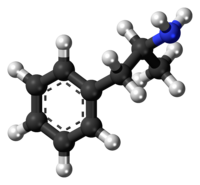
Photo from wikipedia
ABSTRACT Introduction: Among substance users, women represent a small, unique subpopulation. Studying their socio-demographic and substance-use profile helps us understand their concerns and formulate management strategies. Materials and Methods: In… Click to show full abstract
ABSTRACT Introduction: Among substance users, women represent a small, unique subpopulation. Studying their socio-demographic and substance-use profile helps us understand their concerns and formulate management strategies. Materials and Methods: In this retrospective chart review, all the available records of outpatient treatment seekers at National Drug Dependence Treatment Centre (NDDTC), All India Institute of Medical Sciences (AIIMS), Ghaziabad, from 1 January 2011 to 31 December 2015 were screened. Data from the women substance users were entered into a specially designed MS Excel format and analyzed. Results: In these 5 years, 217 women (mean age 36.75 ± 11.84 years) sought treatment. Majority were married (75.6%), housewife (53.5%), educated (59.4%), from an urban background (70.0%). Most common primary substance used was opioid (61.3%), including heroin (30.0%) and pentazocine (16.1%). About 20.3% reported injectable opioid use. The mean duration of opioid use was 5.44 ± 4.68 years. History of prior treatment seeking was reported by 4.6% and no prior significant abstinence attempts by 77.4%. Discussion and Conclusion: Majority of female treatment seekers, are young, married urban women and seek treatment for opioid use, particularly heroin (as opposed to pentazocine, suggested by previous studies). Prior treatment seeking and abstinence rates are low. Data indicates the need of specialized services for this population.
Journal Title: Journal of Substance Use
Year Published: 2017
Link to full text (if available)
Share on Social Media: Sign Up to like & get
recommendations!